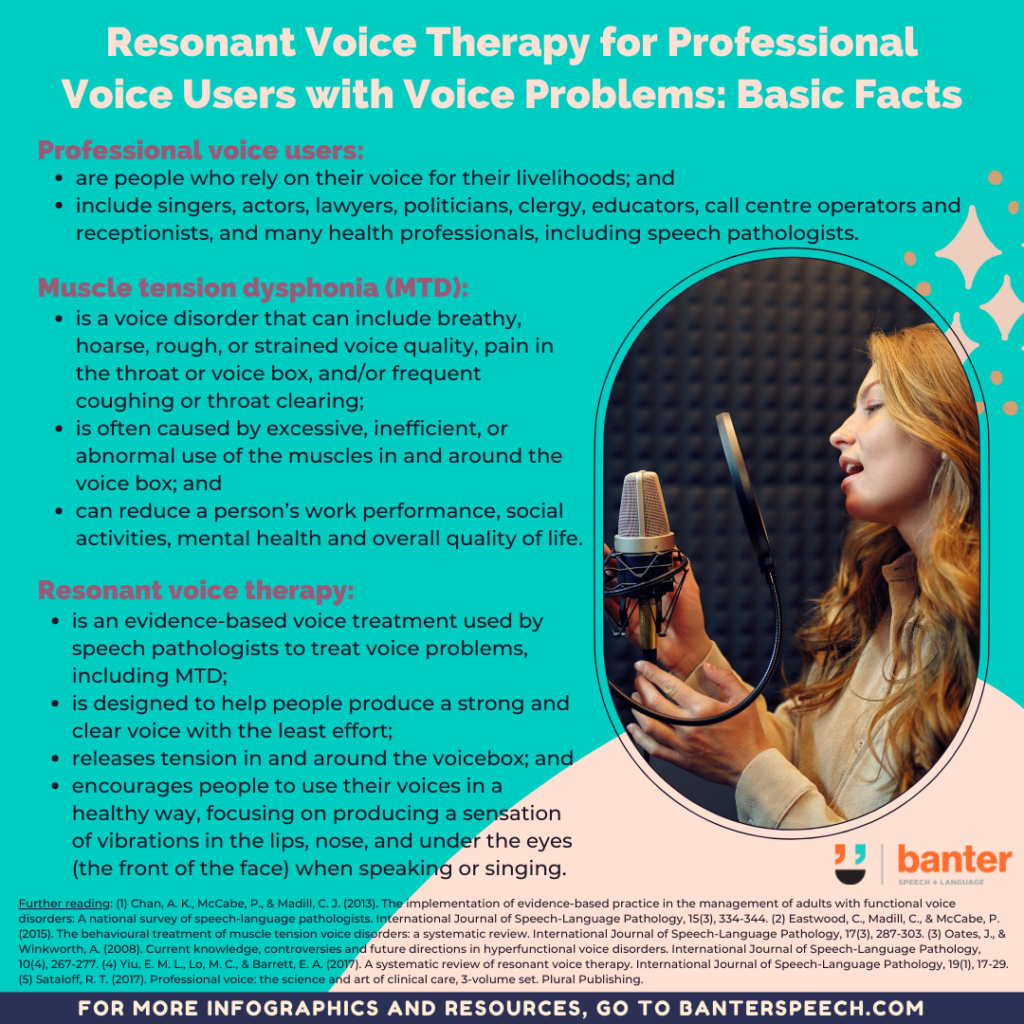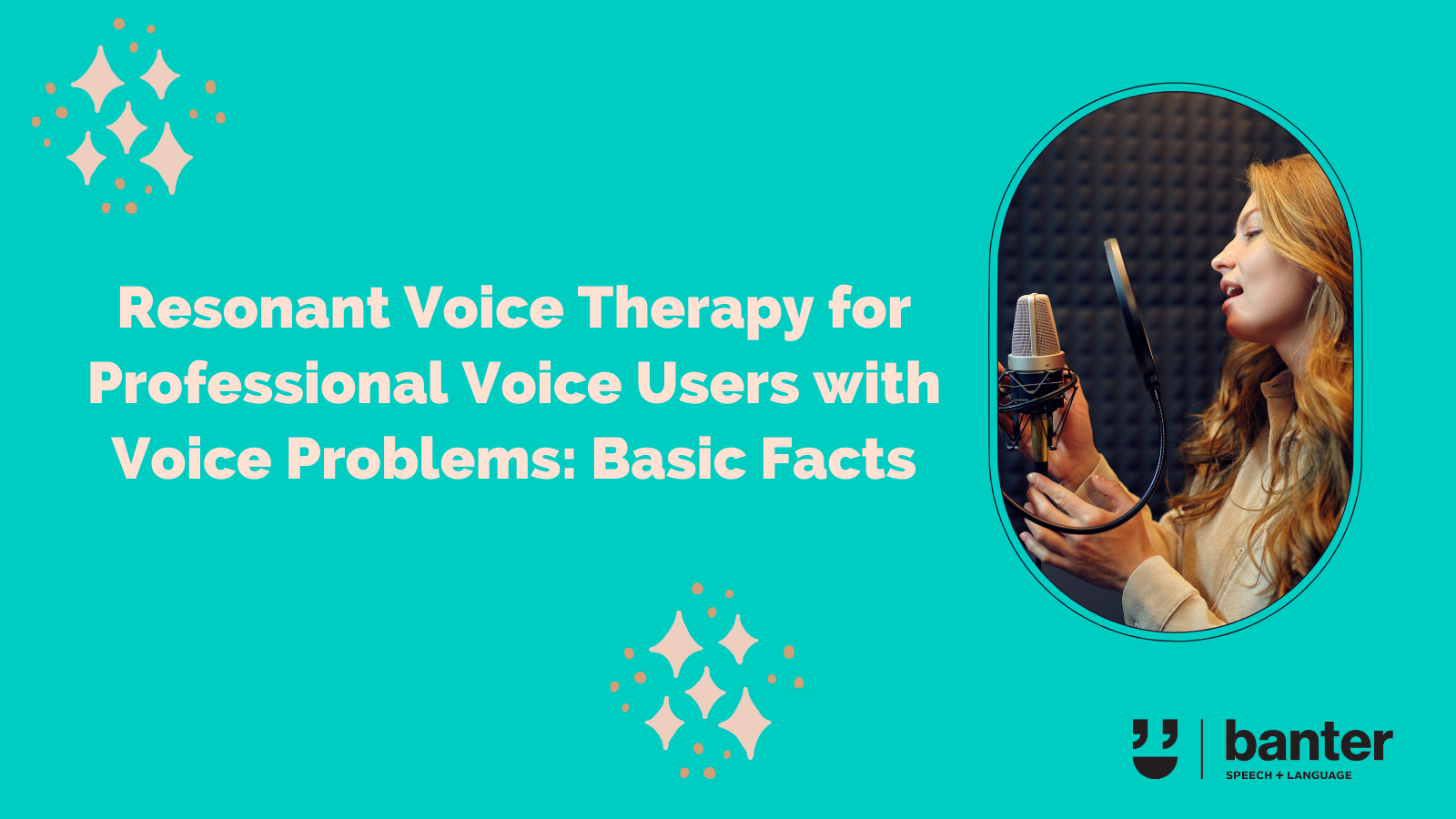Professional voice users:
- are people who rely on their voice for their livelihoods; and
- include singers, actors, lawyers, politicians, clergy, educators, call centre operators and receptionists, and many health professionals, including speech pathologists.
Muscle tension dysphonia (MTD):
- is a voice disorder that can include breathy, hoarse, rough, or strained voice quality, pain in the throat or voice box, and/or frequent coughing or throat clearing;
- is often caused by excessive, inefficient, or abnormal use of the muscles in and around the voice box; and
- can reduce a person’s work performance, social activities, mental health and overall quality of life.
Resonant voice therapy:
- is an evidence-based voice treatment used by speech pathologists to treat voice problems, including MTD;
- is designed to help people produce a strong and clear voice with the least effort;
- releases tension in and around the voicebox; and
- encourages people to use their voices in a healthy way, focusing on producing a sensation of vibrations in the lips, nose, and under the eyes (the front of the face) when speaking or singing.

Further reading:
- Chan, A. K., McCabe, P., & Madill, C. J. (2013). The implementation of evidence-based practice in the management of adults with functional voice disorders: A national survey of speech-language pathologists. International Journal of Speech-Language Pathology, 15(3), 334-344.
- Eastwood, C., Madill, C., & McCabe, P. (2015). The behavioural treatment of muscle tension voice disorders: a systematic review. International Journal of Speech-Language Pathology, 17(3), 287-303.
- Oates, J., & Winkworth, A. (2008). Current knowledge, controversies and future directions in hyperfunctional voice disorders. International Journal of Speech-Language Pathology, 10(4), 267-277.
- Yiu, E. M. L., Lo, M. C., & Barrett, E. A. (2017). A systematic review of resonant voice therapy. International Journal of Speech-Language Pathology, 19(1), 17-29.
- Sataloff, R. T. (2017). Professional voice: the science and art of clinical care, 3-volume set. Plural Publishing.
Related articles:

Hi there, I’m David Kinnane.
Principal Speech Pathologist, Banter Speech & Language
Our talented team of certified practising speech pathologists provide unhurried, personalised and evidence-based speech pathology care to children and adults in the Inner West of Sydney and beyond, both in our clinic and via telehealth.


Leave a Reply